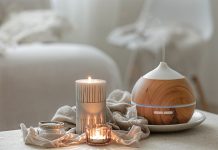Creating a motivating and inspiring homework room can significantly enhance a student’s learning experience. A thoughtfully designed space can promote focus, creativity, and a sense of ownership over one’s studies. This article explores essential elements in setting up a productive homework area by focusing on layout, personalization, lighting, and color.
Designing a Functional Layout: Balancing Comfort and Productivity
The layout of a homework room plays a crucial role in fostering both comfort and productivity. Ensure that the desk and chair are ergonomically designed to promote healthy posture during long study hours. Consider incorporating storage solutions that are easily accessible, allowing for an organized environment that minimizes distractions.
Utilizing the available space effectively is essential, whether the homework room is a dedicated room or a corner in a shared area. Opt for a quiet corner with minimal foot traffic, allowing for uninterrupted focus during homework sessions. Including a comfortable seating option, like an armchair or bean bag, can also provide a cozy retreat for reading or brainstorming.
When planning the layout, think about incorporating areas designated for various subjects or activities. A section for reading materials, another for art supplies, and a quiet space for studying math problems can help students mentally switch gears between different tasks. This functional division allows for better organization and can spur excitement about studying in the home environment. Keep in mind that the IB Organization can offer any of its four academic programmes, and children will need ample space for productivity and creativity.
Incorporating Personal Touches: Motivational Art and Décor

Personal touches in a homework room can transform a generic space into one that inspires learning and creativity. Students can hang up motivational quotes on the walls or include artwork that resonates with their aspirations and interests. This helps create an environment that not only feels personal but also encourages a positive mindset toward homework.
Moreover, incorporating elements that reflect personal hobbies or achievements can foster a sense of pride and motivation. For instance, displaying diplomas, trophies, or even artwork created by the student can remind them of their capabilities and successes. According to ThinkImpact, an estimated 3,650,000 students graduated from high school in 2020, showcasing that these personal achievements contribute significantly to a student’s confidence and motivation.
Additionally, adding decorative elements such as themed notebooks, colorful bulletin boards, or creative wall decals can make the study space more inviting. Allowing students to choose their motivational art and decorations can empower them and enhance their ownership of the space. This customization can make studying feel less like a chore and more like an inspiring adventure.
Optimizing Lighting and Color: Setting the Right Mood for Focus
Lighting plays a significant role in setting the mood for productivity and focus in a homework room. Natural light is the ideal source, helping to enhance concentration and overall mood. However, if natural light is limited, opt for warm white bulbs to create a welcoming environment that reduces fatigue during long study sessions.
In addition to the type of lighting, color choice can profoundly influence one’s ability to focus and feel inspired. For example, soft blues and greens are calming, while brighter colors like yellow can help energize the environment. Creating a balanced color palette throughout the room can significantly encourage creativity, especially in an inviting home atmosphere.
The right combination of light and color also helps establish a routine by signaling the brain that it’s time to focus. Consider using dimmable lights to adjust brightness according to the time of day, creating an adaptive space that fits different study needs. Studies indicate that 10% of students in the U.S. go to private school, which emphasizes the importance of tailored environments for learning, regardless of the type of school setting.
Conclusion
In conclusion, crafting a motivating and inspiring homework room is an essential endeavor for enhancing a student’s learning experience. By thoughtfully designing the layout to balance comfort and productivity, incorporating personal touches, and optimizing lighting and color, parents can create an environment that fosters focus and creativity. This nurturing home space will not only make homework more enjoyable but also ensure students develop a positive attitude toward their education.





